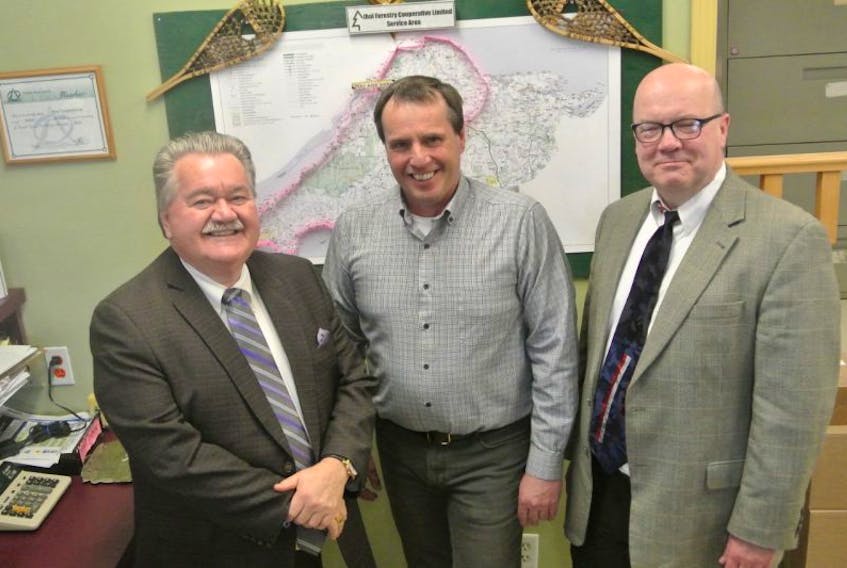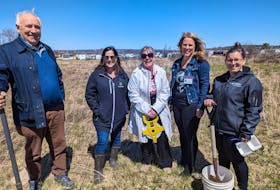Nova Scotia Minister of Natural Resources Lloyd Hines met with forestry insiders at the Athol Forestry Cooperative March 2nd in Amherst to share what many have felt they’ve known all along – not every load of logs comes from clear cutting.
“We want Nova Scotians to understand our forest industry,” Hines said. “We have a proud of history of forestry in Nova Scotia – it goes back a long time – and understand the economic impact.”
With independent data gathered by Gardiner Pinfold, Statistics Canada and Forest Nova Scotia in hand the minister outlined key findings, chief among them: less than one-per cent of the province’s forests are harvested annually, the bulk of which comes from private land owners.
According to Forest Nova Scotia, Cumberland County leads the province in annual harvesting. Fifteen per cent of the provincial harvest occurs here, followed by Halifax County where 11 per cent of the provincial harvesting takes place.
“Cumberland County is really the largest portion of wood harvest in the province – by quite a bit,” Hines said. “It’s an important industry to this area so we were happy to come out and have a chat with people.”
Many Nova Scotians still remember bailouts and land deals for failing pulp mills by previous governments and a time when the Nova Scotia Power’s biomass generation was running around the clock. Both are legacies the province and forestry industry are trying to recoup from.
“[Biomass] was consuming 540,000 tonnes a year, of which 240,000 tonnes were primary forest products, ie. new cut. The rest was bark, chips, sawdust,” Hines said. “When we switched from a must-run basis to an as-needed basis that took out 200,000 of that 240,000 tonnes of primary forest… a decision was made at a different time to build that facility and in fairness it was clouded by the extreme shock that was felt in Nova Scotia when NewPage [mill] pulled the plug in 2011-2012.”
Moving forward, Hines hopes Forest Nova Scotia’s message of a healthy and renewable industry will be embraced. According to its research there was more forest coverage in 2015 than 100 years ago, and the province plans to use the best practices managing that coverage.
“We do have a responsibility to manage the Crown production in the province and we are sincerely using a science-based approach that is sustainable,” Hines said. “We don’t want to be the folks that killed the goose that laid the golden egg.”
To learn more about Forest Nova Scotia, visit www.forestns.ca. To learn more about Athol Forestry Cooperative, www.atholforestry.com.
Fast facts
• 75 per cent of Nova Scotia is forest covered
• 65 per cent of forests are privately owner
• 0.78 per cent of N.S. forest land is harvested annually
• Employs 11,500 through direct and indirect jobs
• 85 per cent of N.S. forests regrow naturally
Source: Forest Nova Scotia









